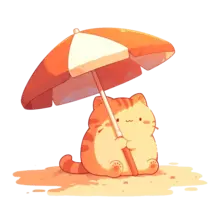Car insurance is one of the most important types of insurance because we spend so much time in our cars. Having car insurance is an acknowledgement that driving a car comes with certain risks. When you get behind the wheel of a car you may get distracted and cause a crash, or you may be in the wrong place at the wrong time and get hit by someone else. Learn more about how to buy car insurance and what types of car insurance you can buy in the US.
According to the National Highway Traffic Safety Administration (NHTSA) 2021 Crash Stats (PDF), 16,720 police-reported accidents occurred every day across the country. People were injured in nearly 41% of those accidents.
Whether you are financially set or struggling to pay your bills, a car crash can mean significant financial problems if you’re underinsured.
There are six types of costs associated with car accidents: - Medical bills
- Auto repairs
- Increased insurance premiums
- Missed work
- Car rental costs
- The difference between what your car is worth and what you still owe on it (the gap)
If you can’t afford to pay for all of these things, you’re not alone.
Buying car insurance is how you reduce your personal financial risk if you’re in a crash. Car insurance is not a remedy for all potential losses in a car crash — you can have car insurance and still end up owing money after they pay out.
This is why it’s so important to choose the right insurance for your own needs (one size does not fit all). The complexity of getting it right is why we started Coverage Cat.
If figuring it out yourself seems overwhelming, let us do it for you or first learn about what we do .
Why is car insurance required?
Believe it or not, car insurance isn’t strictly required in New Hampshire or Virginia. In the other 48 states, car insurance is required by law to make sure as many people as possible are financially accountable for the risks that come with driving.
Fifty seven percent of Americans can’t afford a $1000 emergency expense. And 37% can’t cover $400. This is why car insurance is required nearly everywhere. But also, it’s a really good idea to protect your own assets, even if you can afford the costs of a crash.
What happens if I don’t have auto insurance?
If you get caught without car insurance, the punishment will vary from a slap on the wrist to jail time, depending on which state you’re in, whether or not you’re a repeat offender, and what you were doing when it was discovered that you’re uninsured.
There are three scenarios to consider: 1. You get pulled over and the police discover you don’t have insurance.
- You get in a crash and you don’t have insurance.
- Your car gets towed and you don’t have insurance.
According to Progressive Insurance, fines for driving a car without insurance go as high as $5,000 in some states. Many states suspend your driver’s license for a period of time, even for first time offenses. If your car gets towed, most states won’t let the impound lot release the car without proof of insurance.
It’s really just not a gamble worth taking. If you must drive, you must be insured. If money is really tight, learn how to get cheaper car insurance.
How car insurance works
As mentioned earlier, car insurance (all insurance, really) is about managing risk. Each time you get in the car, there is a small chance you’ll be in a crash.
Like other insurance, your premiums (monthly or semi-annual payments) go into a big pool of money that the insurance company uses to pay for any claims (accidents or property damage) that arise for any of their customers. If you make a claim, the coverage for your expenses comes out of this big pool of money.
Before your insurance company pays those bills, you have to pay a deductible. The deductible serves a two main purposes for insurers: - It creates an extra incentive to not make frivolous claims. If there is no financial penalty to make a claim, the insurance companies might find themselves needing to service a high number of small losses, which is not really why they’re there.
- It puts a little extra burden — otherwise known as “skin in the game” — to keep drivers on the straight and narrow.
Does my insurance insure me as a driver? Or my car?
It all depends on your policy, so make sure you read it carefully to know the answer.
Other drivers using your car. Anyone listed on your policy is covered when driving your car (the more people you add to a policy, the more your premium will go up).
It is often the case that when someone not listed on the policy is involved in an incident, coverage depends on whether or not the driver had permission to be driving your car in the first place.
When you drive other people’s cars. The rules above apply in reverse, but if you’re wondering whether your own insurance covers you when you’re driving someone else’s car, the answer is that it depends. Generally your liability coverage will transfer to any vehicle you’re driving, but not your comprehensive and collision coverage ( what these terms mean ). It depends on what is in your policy.
When you rent a car. Like the other answers, it depends on your policy. Some car insurance policies automatically include insurance for cars you rent, and others require you to purchase an additional endorsement for that kind of coverage. Others don’t cover rentals at all.
Side note: commercial activity, even conducted by you in your own car, is generally not covered by your personal auto insurance (e.g. ride sharing and delivery drivers).
How much car insurance do I need?
From a legal perspective, you are only required to carry your state’s minimum coverage for your auto insurance. In most states, insurance coverage has a shorthand that looks like this:
30/60/25 or 25/50
The first number is the maximum amount, per person per accident , the policy will cover for bodily injury.
The second number is the maximum amount, for all people per accident , the policy will cover for bodily injury.
The last number (not required in all states) is the maximum coverage for property damage per accident.
Here are some examples: - In California, drivers are only required to have 15/30/5 coverage.
- In Texas, drivers are required to have at least 30/60/25 coverage.
- In New York and Washington state, drivers must have at least 25/50/10 coverage. New York also requires Personal Injury Protection (PIP) and Uninsured Motorist Coverage (UM).
The problem is that in a crash with injuries, medical bills can pile up far past that minimum personal injury limit. Similarly, a crash with an expensive car (like a Tesla) could be super expensive to repair or replace.
The really important part! If your net worth exceeds the limit your insurance covers, you could be personally liable for the injuries and damage sustained in a crash.
Typically, the more car insurance coverage you buy, the more your premiums go up (there’s an exception to this). As a consumer, you are forced to guess what you can afford depending on what kind of accident you might get into. That’s not easy (or fair, really… Do you have a crystal ball?).
So how much do you need? It depends on how much income and net worth you’re protecting, how much risk you’re willing to take on, and various other factors.
Sounds complicated? Optimize your insurance with Coverage Cat!
How do I lower my car insurance premiums?
There are two ways to approach lowering your car insurance premiums: lower your current premium with your current insurance company and shop around for a better policy from a new insurance company.
Tip: you can change insurance policies at any time. You do not have to wait for your current term to end. You can cancel or change your current policy, typically with no fee or a minimal fee. You should receive a prorated refund of the difference between how much you prepaid for the full term and how many days your policy was active.
How to get cheaper insurance with your current insurance company
First, make sure you’re taking advantage of what your existing policy has to offer. For example, if you have multiple policies with different carriers, you might miss out on bundling discounts. Or you could get additional discounts by switching to paperless billing and paying your premium in full before the beginning of the term. There are many discounts available.
Second, raise your deductible if you can afford it. If you feel comfortable paying for minor repairs out-of-pocket, you can save on premiums and keep your insurance rates from rising in the future.
Finally, don’t pay for coverage you don’t need. Add-ons like tow and rental car coverage or even buying full coverage when your car is older and depreciated can quickly add up, so make sure you’re carefully reviewing your options and considering what you do (or don’t) need.
How to get cheaper insurance with a new insurance company
The only right way is to get multiple quotes. There are different ways to get insurance quotes, each with pros and cons.
Quotes directly from insurers. If you already know which insurance companies you’re willing to buy from and what kind of insurance you want or need, you should go directly to their websites and get quotes. Get at least three, you may be surprised at the potential variability.
Quotes from a local broker. Many people feel most comfortable working with a local insurance broker, which is where you’re most likely to get personal advice. Be warned, they may be inclined to give you advice that makes them more money rather than what's really best for you.
Quotes from an online broker. In many cases, online brokers only work with a limited number of insurers and aren’t going to provide you with quotes from companies they don’t get commissions from.
You also might get chased for weeks via phone or email by these services who will do anything to get their commissions once they have your personal information.
Try Coverage Cat (we’re an online broker who respects your time and never calls). - We’ll get your optimized quote from ALL insurers in your area, even if we can’t sell you the policy. These are actual quotes, not data-driven guesses.
- We don’t engage in sales tactics. You won’t get a barrage of calls or email spam because you try our service — from us or anyone else.
- People often buy the wrong kinds (or amounts) of insurance for their needs, we want to help you avoid that.
How to understand your car insurance policy
Figuring out how to improve your coverage often starts with understanding what your policy includes and what it does (and doesn't) cover. Below, you'll find the most important terms on your policy and what they mean. - Declaration page. This is the document which describes your insurance policy (the contract you have with the insurance company). Most people read this page and think it is their whole policy. This is NOT the whole policy, in particular policy exclusions are not listed on a “dec page.” Read your WHOLE policy to understand what is covered and what isn’t.
- Claims. When you have insurance, you have the ability to make a claim. A claim can be initiated by an accident or when damage which occurs to your car when you are not driving it. The rules of claims vary by insurer and by your selected insurance coverage.
- Premium is the term used to describe what you pay each month for your car insurance.
- Deductible is the amount you owe out of pocket before the insurance company starts paying anything.
Tip: If you have a solid savings account, raise your deductible to an amount you’re comfortable paying out of pocket (money you might spend), it lowers your premium (money you will spend).
- Liability is how much money is owed when an accident occurs (whether you pay it or your insurance company does). The term includes damage to all cars in an accident, injuries to all people involved in an accident, and damage to other property caused by an accident.
- Coverage is the maximum amount of money your insurance company will pay out in an accident or other claim. - Bodily injury (BI) liability coverage. This coverage is used when someone else is injured while you or anyone else is driving your car. BI pays for medical costs and your legal defense if others are injured by your car.
- Property damage (PD) liability coverage. This covers damage to someone else’s car (and other property) when you are in an accident.
- Minimum liability insurance. Some people and states describe the whole package of insurance you need for bodily injury and property damage liability coverage this way. It’s not a separate kind of coverage.
- Collision coverage. If your car is hit by another vehicle or damaged by any stationary objects, such as potholes, guardrails, or poles, collision coverage pays for the repair or replacement of your car regardless of who is at fault. This part of your insurance is subject to a deductible.
- Comprehensive coverage. If your car is damaged by unexpected forces such as an animal, tree branch, weather events, or even vandalized or stolen, comprehensive coverage pays for the repair or replacement of your car. Like collision, your comprehensive coverage is subject to a deductible.
- Uninsured and Underinsured Motorist coverage. This kind of coverage helps you out when someone else causes your accident and they don’t have enough insurance to cover the damages and injuries. Instead of paying out of pocket, you can insure yourself against these scenarios.
Think this isn’t a problem to worry about? The Insurance Information Institute says nearly one in eight drivers is uninsured, but it varies wildly by state. Be sure to read their estimate for uninsured drivers in your state when considering this add-on.
- Personal Injury Protection (PIP). Most people who think about PIP live in a “no fault” state. “At fault” vs “No Fault” is a fairly complex topic. PIP is something to consider if you live in one of these states: AR, DE, DC, FL, HI, KS, KY, MA, MD, MI, MN, NJ, NY, ND, OR, PA, SD, TX, UT, VA, and WA.
- Minimum coverage requirements for auto insurance are defined by each state. The purpose is to ensure that people who cause accidents are able to pay at least some money to injured parties in the event of damages, however this is often not enough to fully cover losses in accidents. If your liability is more than your coverage, you personally owe the difference.
- Full coverage isn’t a real thing. No insurance policy truly offers “full coverage” for every liability you might incur — the insurer explicitly limits how much they are willing to pay. Full coverage sometimes describes policies that provide liability, collision, and comprehensive coverage.





